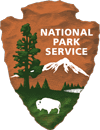In 2013, The Tuscarora Heroes Monument was unveiled in Lewiston, NY to honor those who saved countless lives during the War of 1812.
In the final hours of December 18, 1813, approximately midway through the War of 1812, some 500 British soldiers (regulars) as well as some 500 militia and Indians aligned with the British—crossed the Niagara River from Canada to a place called ‘Five Meadows.’ The British invaders were determined to first seize Old Fort Niagara, just 5 miles north of that location, before turning their attention to march south to what is now Buffalo and then to the east.
After capturing the Fort from the Americans, a signal by cannon fire was sent to the British troops staged and staging after crossing the Niagara at their landing location. The signal heralded the 2.2 mile march toward Lewiston, NY, “a small frontier village, situated on the Niagara River right at the border between the United States and Canada.” Unsuspecting residents were now in the direct path of the British who were closing in fast. The British, aided by their Canadian and First Nations allies, attacked the village in retaliation for Americans’ burning of Newark (known today as Niagara-on-the-Lake) nine days earlier.
Nearly 1,000 troops charged down River Road “armed with torches, guns and tomahawks." With no real defense to protect their businesses and homes from the invaders, Lewiston residents could only run for their lives through the snow and mud in hopes of escaping. As the troops slaughtered people in the streets and destroyed everything in their path, terrified villagers were starting to lose hope.
Then, they heard horns and shouting from high above. The Tuscarora Nation, who lived atop the Niagara Escarpment, and who were expecting the attack, had come to their rescue. Thirty brave Tuscarora warriors rushed down the mountain with their war whoops, making it seem as if a legion were coming to defend the fleeing villagers. They created such a mighty diversion that the British retreated, thinking that the Americans greatly outnumbered them. In reality, the British outnumbered the Tuscarora 30 to 1. The Tuscarora’s intervention gave villagers the chance to escape, saving dozens of lives.
In all, at least 16 known villagers and 4 American militia were killed in the attack. The British burned both Lewiston and the Tuscarora Village to the ground. The Tuscarora lost their homes and their entire winter food supply.
There is now a monument in Lewiston, NY remembering the Tuscarora’s act of heroism. According to project organizers, the Tuscarora Nation had never been thanked for their heroism on that tragic day in 1813. The Tuscarora Heroes Monument thus “stands as a testament of thanksgiving to the Tuscarora Nation.” At the time of its unveiling, “it was believed to be the only monument from a community expressing gratitude to Native Americans.”
Located at the scene of the battle, the monument depicts life-size bronze statues of two Tuscarora men helping a fleeing white woman and baby. The platform itself is rich in Native American symbolism. “A bronze plaque lists the names of the Tuscarora Heroes, along with the names of those killed in the attack.”
The monument is the work of world-renowned sculptor and Lewiston, NY resident Susan Geissler. It was unveiled on December 19, 2013 for the 200th anniversary of the attack and was “recognized as the largest War of 1812 bicentennial monument project in the United States.”
Tuscarora Nation Elementary School students and the Historical Association of Lewiston filled a time capsule with letters and other memorabilia and entombed it in the monument. It will be opened in 200 years on the Quadricentennial of the Tuscarora Heroes’ intervention.
Hope L. Russell, Ph.D.


